There are places you don’t just stumble upon. You earn them, step by step, stroke by stroke. Cala Goloritzè is one of them, a vision tucked away between the dizzying cliffs of the Gulf of Orosei, where the sea bursts into shades of turquoise, the rock turns to sculpture, and silence tells stories of wind and light.
This is no ordinary beach. It’s a natural sanctuary where every detail (from sand to seabed, from the time-carved arch to the solitary spire) evokes awe and reverence.

Where is Cala Goloritzè and why is it famous?

Cala Goloritzè reveals itself all of a sudden, after a hike through the lunar landscapes of the Supramonte of Baunei or a sea journey between wind-sculpted rocks. It lies in the southern part of the Gulf of Orosei, at the heart of Sardinia’s wildest and most authentic coast.
Its fame lies in a rare blend of beauty, isolation, and environmental protection. This inlet, embraced by sheer cliffs and guarded by blindingly turquoise waters, is sprinkled with white pebbles that shimmer in the sun. But it’s the limestone spire, the iconic “Aguglia”, a 143-meter natural monolith, that turns every gaze into a postcard.
Declared a Natural Monument of Sardinia in 1993 and a National Italian Monument in 1995, Cala Goloritzè has also conquered the hearts of international experts: in 2025, The World’s 50 Best Beaches crowned it the most beautiful beach in the world.
What makes it even more precious is its status as a protected area. Cala Goloritzè is part of the Gulf of Orosei and Gennargentu National Park and listed as a Site of Community Interest. This means that every wave, every pebble, and every root reaching into the soil is worthy of protection and respect.
History and conservation: Cala Goloritzè as a protected wonder
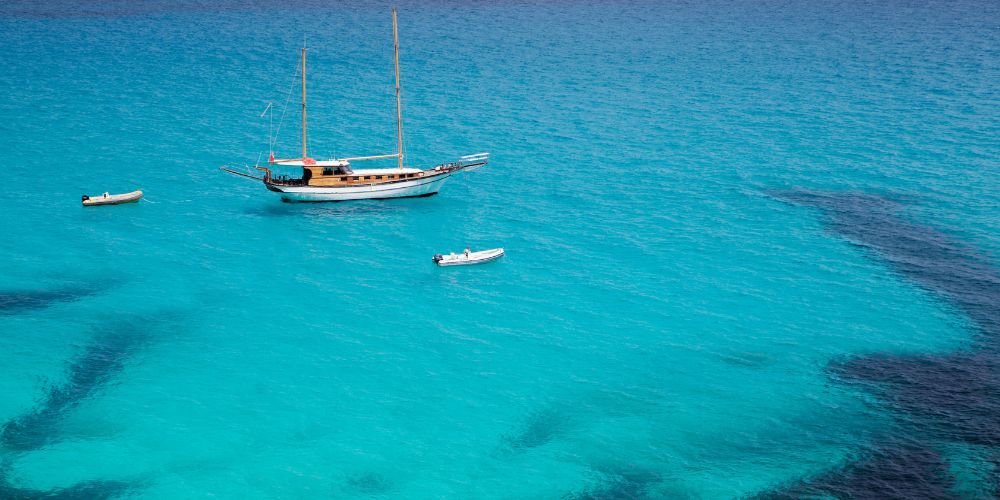
Cala Goloritzè wasn’t shaped by the slow rhythm of erosion, but by a sudden event that created wonder. In 1962, a landslide carved what would become one of Sardinia’s most enchanting beaches — a marvel suddenly sculpted by nature, and one that humans quickly learned to protect.
Since then, this little cove near Baunei has captivated thousands of visitors and photographers, becoming the undisputed icon of the Ogliastra region. It’s no coincidence that it’s considered the most photographed beach in the area: from the crystal-clear waters to the natural arch framing the sea, every detail seems crafted to leave you breathless.
The first official recognition came in 1993, when the Region of Sardinia proclaimed it a Natural Monument. Just two years later, in 1995, it became a National Italian Monument. Although it has never been listed as a UNESCO World Heritage Site, its landscape and environmental value are considered among the highest in Europe, a status confirmed in 2025 when The World’s 50 Best Beaches named it the "world’s most beautiful beach".
But Cala Goloritzè’s true wealth lies in its ongoing commitment to conservation. Strict access rules, visitor limitations, and a decision to keep the beach reachable only by foot or small rowboats reflect that mission. No engines disturb the crystalline silence: motorized boats must remain at least 200 meters from the coast.
Protecting Cala Goloritzè isn’t just environmental policy, it’s a way to educate visitors on beauty. Because only by preserving can we continue to marvel.
How to get to Cala Goloritzè: wonder that must be earned
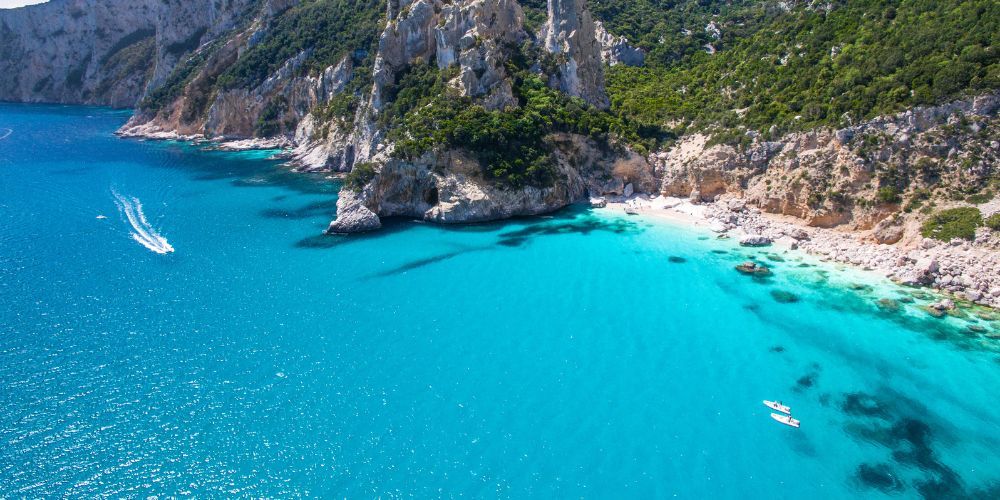
Whether you take the mountain trail across the Supramonte or a boat excursion along the Ogliastra coast, the journey to this hidden pearl is a true adventure.
Those who choose the land route begin from the Golgo Plateau, specifically the Su Porteddu area, where a paid parking lot marks the start of an experience that’s already unforgettable. The trail stretches for about 3.6 kilometers through limestone rock and Mediterranean vegetation, with a 500-meter elevation change.
It’s not a casual walk, this is a medium-difficulty hike that demands proper footwear, water supplies, sun protection, and a willingness to slow down and observe. Along the way, the landscape shifts constantly: sun-scorched clearings, shaded passages, and panoramic openings that hint at the turquoise sea to come. After about 90 minutes, the beach appears between the rocks like a revelation.
Those who prefer to admire Cala Goloritzè from the sea can join one of the many boat tours departing from Cala Gonone, Arbatax, or Santa Maria Navarrese. The boats respectfully stop at a distance, in accordance with the no-landing rule. From there, you can swim in the transparent waters and float while admiring the beach from a privileged perspective, with the arch framing the cove and the limestone spire reflecting in the sea. Some tours even pass beneath the natural arch, a moment of pure magic.
What to expect: raw nature, no filters
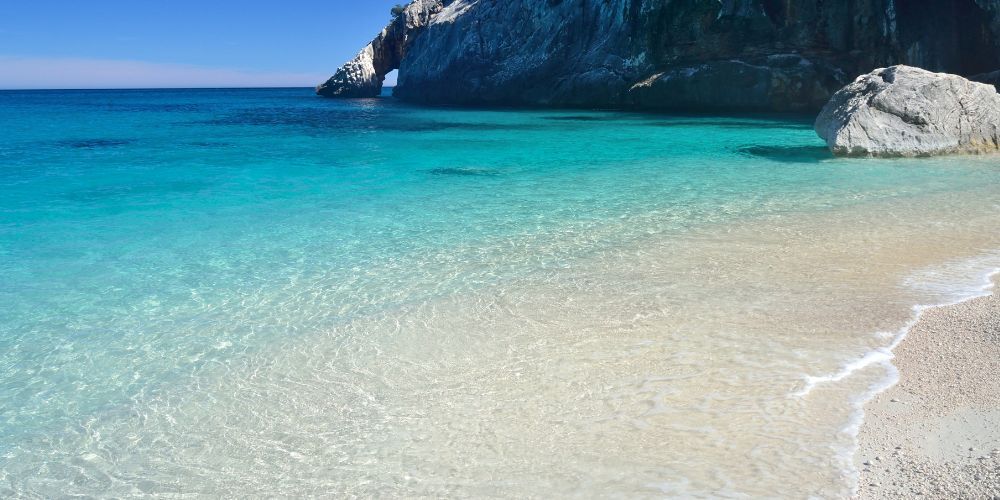
If you arrive at Cala Goloritzè expecting sun loungers, bars, or beach umbrellas, you’ll quickly realize this is an entirely different kind of destination. Here, the charm lies precisely in the absence of services and comforts, in its wild, untouched essence.
There are no kiosks for buying water, no cafés for shaded breaks. Cala Goloritzè is as it was born: pure, free, pristine. Visitors must come prepared, bringing everything they need for a day off-grid, sturdy shoes, a well-packed backpack with at least two liters of water per person, snacks, sunscreen, swimsuits, a hat, and perhaps a small umbrella or cooler if staying into the afternoon.
Access is strictly limited to preserve the fragile environment. Only 250 people are allowed each day, and reservations are mandatory, via the Heart of Sardinia app or the official website of the Municipality of Baunei.
Swimming, snorkeling and photographing Cala Goloritzè: emotion above and below water
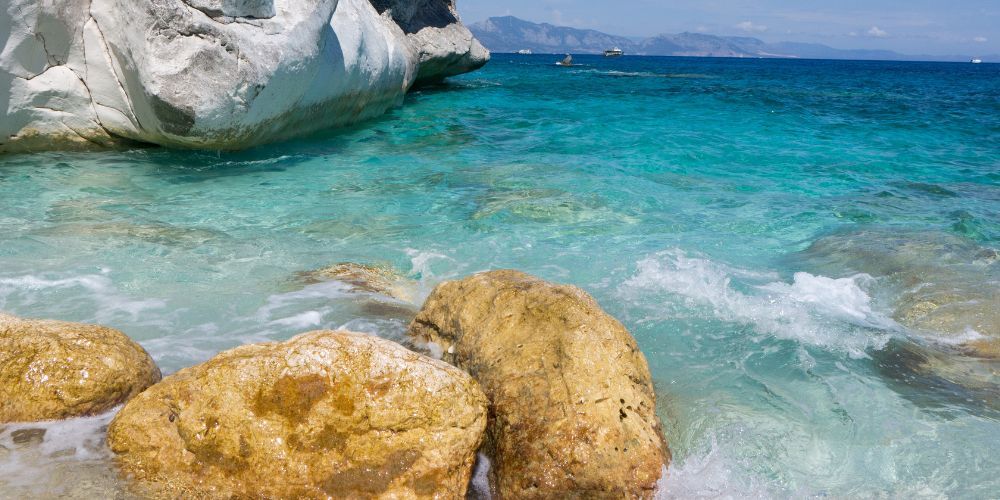
Cala Goloritzè is not just to be admired, it’s to be explored, above and below the waterline.
The sea is often calm and clear, shimmering with every shade of turquoise. Those who arrive by boat can slip into the water just meters from shore and swim toward the natural arch, which stretches across the sky like a bridge to the beyond. Buoys mark safe swimming zones, allowing for a relaxed, respectful dip.
For snorkeling lovers, this is paradise. The seabed, sculpted by rock and dotted with sea flora, shelters a variety of fish, tiny crustaceans and curious marine life. Sheltered areas, especially near cliff walls, offer incredible visibility, just mask up and snorkel through what feels like a natural aquarium. Even less confident swimmers can enjoy the experience safely with a flotation device.
Then there’s the photography, inevitable when faced with such beauty. Cala Goloritzè delivers postcard views at every hour, but it's in the early morning and late afternoon that shadows and contrasts shape the beach with theatrical light. The arch, the towering Aguglia, the reflection of cliffs in the glassy water, every detail begs to be captured.
With a waterproof camera, you can even explore the hidden world beneath the surface. And if you have a drone (used responsibly and legally), the aerial views are breathtaking: the cove drawn between white rock and infinite blue.
Conservation rules: protecting beauty through respect
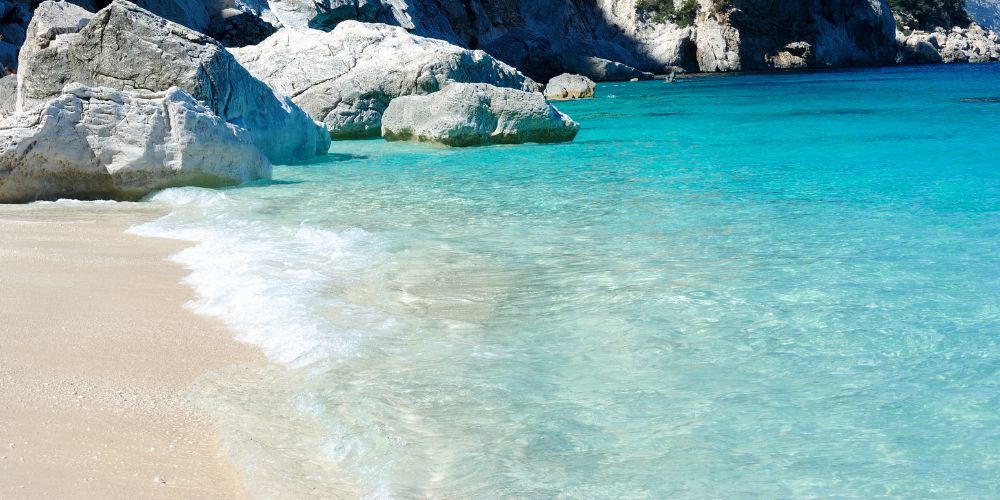
Cala Goloritzè is not a beach to consume, but a sanctuary to respect. Visiting here means leaving behind mainstream tourist habits and embracing a new kind of experience, one grounded in mindfulness.
As mentioned, access is regulated. Only 250 people per day are allowed, not to exclude, but to protect. A small entrance fee helps fund trail maintenance and conservation work.
There are strict prohibitions: no pets, no camping, no picking flowers, plants or shells. Every element of this delicate ecosystem (from the tiniest pebble to the most invisible marine life) plays a vital role. Visitors are expected to bring everything they need, but above all, to leave nothing behind. Not even a wrapper.
Before setting off, it’s a good idea to check the latest rules and access procedures on official websites. But one rule never changes: here, you enter quietly, with the awareness of being a guest in nature’s sacred space.
When to visit Cala Goloritzè: finding the right time for wonder
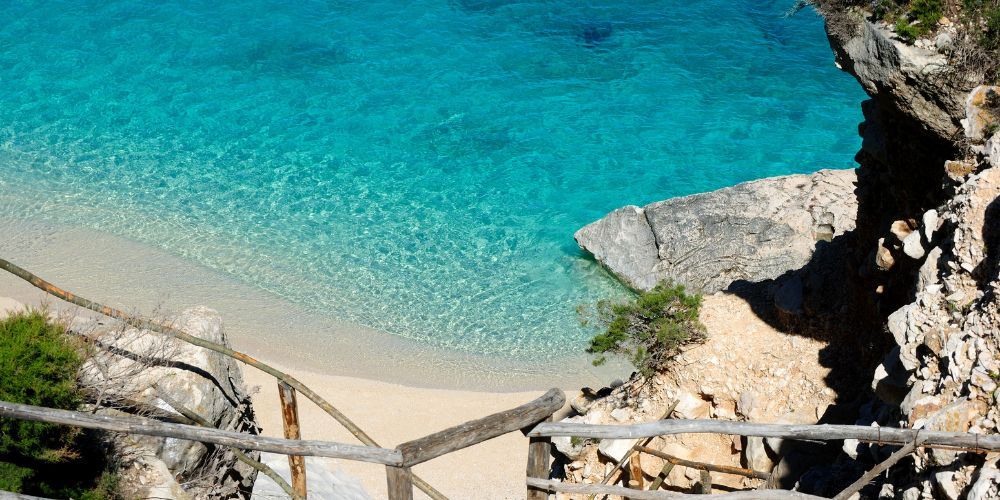
Cala Goloritzè isn’t the same in every season. Its beauty remains intact, but its rhythm (light, temperature, silence) changes. Choosing the right time means tuning in to the beach’s natural tempo and discovering a harmony between longing and patience.
Spring may be the most poetic moment. From April to June, the Mediterranean blooms, the trail is fragrant, and the sun begins to warm the air. The sea gradually turns to deep blue, and the climate invites walking without strain. Ideal for hikers and peace-seekers alike. The water may still be a bit cool early on, but by mid-June, it’s welcoming.
Summer is full immersion: July and August bring heat, long days, and irresistible swimming, but also crowds. Cala Goloritzè becomes a dream chased by many, and advance booking is essential.
September and October are a sweet secret. The sea stays warm, the sun still generous, and the crowds thin out. It’s a perfect time for those seeking balance, between quiet hikes and tranquil swims, between golden light and peaceful coves. Days grow shorter, it’s true, and shadows may fall earlier on the beach, but in exchange, you get the intimacy of a place exhaling again.
Winter belongs to the explorers. From November to March, Cala Goloritzè grows quieter, more rugged, more remote. The weather is unpredictable, the sea not always swimmable, and the hike more demanding. But for those drawn to wild landscapes, solitude, and raw nature, winter offers a different kind of wonder, the kind that lingers long after you've returned.
About the author
Written on 07/07/2025


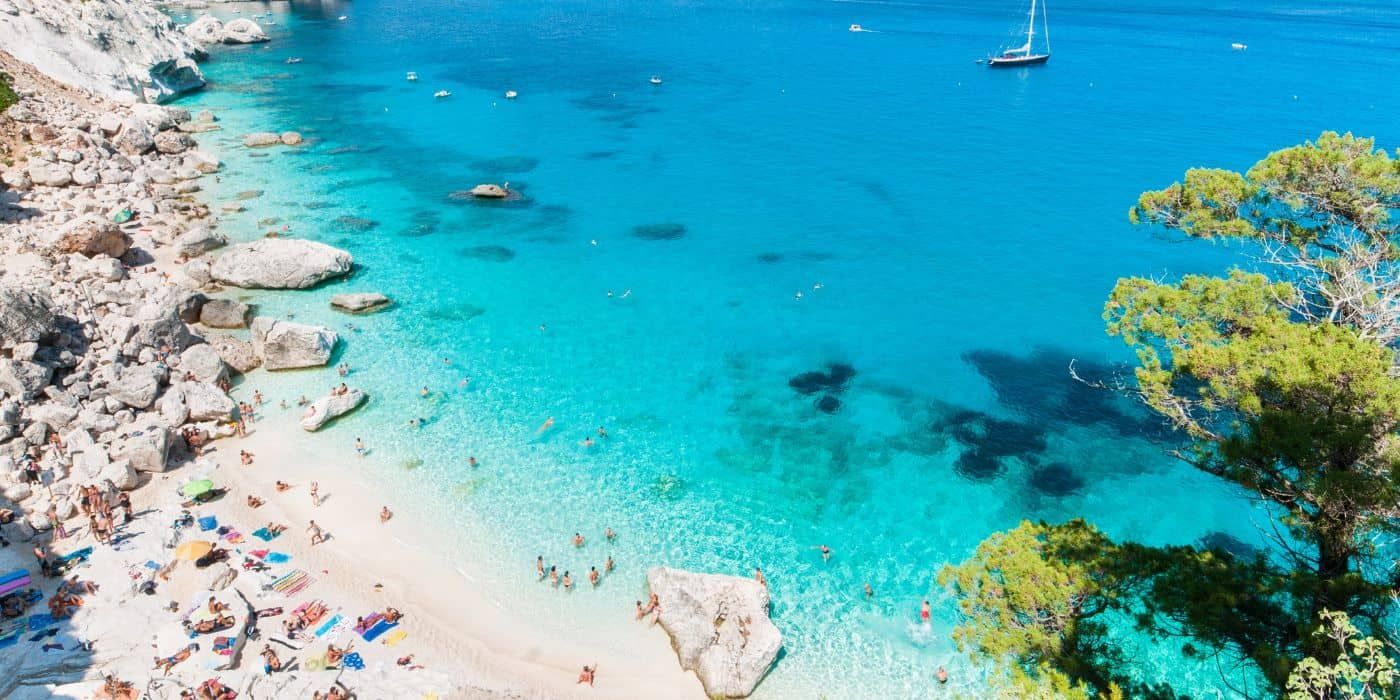

Flavia Cantini
Cala Goloritzè, a wild Sardinian gem of turquoise sea, hiking trails and rules to preserve its delicate beauty.